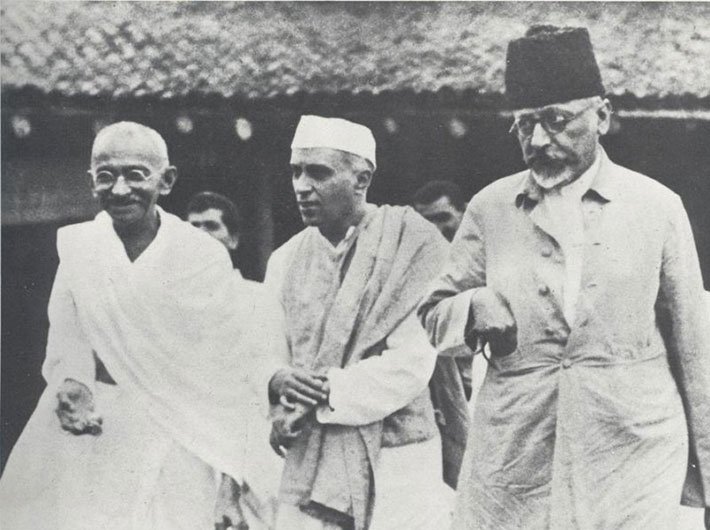Was India on the brink of becoming an Islamic republic before 2014? The answer—however uncomfortable it may be—is a resounding yes. And had the Congress party not been dethroned by the people’s mandate in 2014, India might well have sleepwalked into becoming an undeclared Islamic state—culturally, demographically, and legally.
Look at Europe. Once the bedrock of Christian civilization, several of its nations today are staring at the consequences of unchecked appeasement, open borders, and blind secularism. France and Germany have finally woken up, banning public namaz and imposing restrictions to reclaim their civic spaces after paying a steep price. The United Kingdom teeters on the edge, with lawmakers themselves warning Parliament that Britain is nearing a point of no return. If these nations—armed with resources, technology, and stable democracies—could be brought to their knees, imagine the fate of India, a fragile post-colonial state still reeling from its 1947 wounds.
Unlike Europe, India’s transformation wasn’t driven by immigration. It was engineered internally—legislatively, constitutionally, and politically—by the Congress party. Under the guise of secularism, Congress set about redefining India’s civilizational fabric. What Aurangzeb could not accomplish with the sword, the Congress nearly achieved with constitutional amendments, minority appeasement laws, and demographic engineering. India remained a Hindu-majority nation in name, but a silent erosion of its core had already begun.
The Great Betrayal: Partition and the Birth of Congress’s Two-Nation Project
At the time of Partition, Jinnah demanded a separate Islamic homeland. India was to remain secular—or so we were told. But history suggests something more sinister. Mahatma Gandhi, under the influence of misplaced idealism, brokered a settlement that gifted half the subcontinent to Islamists and the other half to Nehru’s liberal romanticism. Sardar Patel, the pragmatist and a genuine Hindu nationalist, was sidelined. Nehru—educated in the West, detached from India’s cultural core—offered Indian Muslims a “choice” to stay back. Was this choice part of a long-drawn plan to reshape India’s demographic balance? The results speak for themselves.

At the time of Independence, Muslims formed just 4% of India’s population. Today, they are anywhere between 18-20% (and growing), while Hindus in Pakistan have shrunk from 15% to a paltry 1.5%. The differential speaks volumes—not just of population trends, but of state policy.
The Legislative Coup: How Congress Rewired the Constitution
India’s original Constitution, drafted under the stewardship of Dr. B.R. Ambedkar, was secular but not suicidal. But once the Congress secured unchecked power, it began systematically rewriting the rules to favour one community over all others.
Here’s a damning timeline of how Congress turned India into a de facto Islamic republic:
- 1950 – Article 25, 28, 30: These constitutional provisions opened the floodgates for religious conversions (Art. 25), denied Hindus religious education (Art. 28), and gave minorities like Muslims and Christians the right to establish their own religious institutions (Art. 30).
- 1951 – Hindu Religious and Charitable Endowments (HRCE) Act: The state took control of Hindu temples and their finances, while mosques and churches remained untouched. Hindu institutions were looted under state patronage.
- 1954 – Special Marriage Act: This made it easier for Muslim men to marry Hindu women, setting the stage for what is now referred to as “Love Jihad.”
- 1975 – Emergency and the Secularism Smokescreen: In a brazen misuse of power, Indira Gandhi forcibly inserted the word secular into the Constitution during the Emergency—an act of political cover-up masquerading as inclusivity.
- 1991 – Minority Commission Act: Muslims were granted minority status, even in states where they formed a majority. Why? To create a vote bank wrapped in constitutional legitimacy.
- 1992 – Places of Worship Act: This froze the religious character of all places of worship—except for Ram Janmabhoomi—thereby shutting the door on the rightful reclamation of over 40,000 Hindu temples destroyed during invasions.
- 1995 – Waqf Act Amendments: With these changes, the Waqf Board emerged as the second-largest landowner in India after the Defence Ministry. No equivalent Hindu land board exists. Why?
- 2007 – Ram Setu Affidavit: Congress filed an affidavit in the Supreme Court denying the existence of Lord Ram. That’s right—the party claimed India’s most revered deity was mythical.
- 2009 – “Saffron Terror”: Congress coined this phrase to vilify Hindu nationalism. Meanwhile, they refused to acknowledge terrorism emanating from radical Islam, never uttering a word against burqas, madrasas, or triple talaq until forced by the courts or political opposition.

A Two-Tier System of Justice and Faith
Today, temples are under government control, while mosques and churches are autonomous. The government funds madrasas, but Gurukuls receive no support. There’s a Muslim Personal Law Board—but no Hindu counterpart. In courts, Hindu customs are scrutinized while Sharia courts continue to operate under the radar.
Why is there no equality in law if India is truly secular?
And what of education? The Ramayana and Mahabharata are kept out of syllabi, but Islamic and Christian teachings are quietly introduced under “religious harmony” programs.
Congress’s secularism isn’t neutrality. It’s selective hostility.
Constitutional Sabotage Masquerading as Governance
Through a slew of laws—from the Hindu Code Bill (1955) that reformed Hindu families but left Muslim polygamy untouched, to the Dowry Act and Divorce laws targeting Hindu traditions—Congress ensured that Hindu society was fractured legally and culturally. Even family structures were not spared.
The result? Hindu families weakened. Muslim families strengthened. One shrank, the other expanded. Was this organic? Or orchestrated?
And when anyone dares to question this engineered imbalance, the response is swift and brutal: Communal! Bigot! Fascist!
The media joins the chorus. Politicians who attempt corrections are accused of threatening democracy. But who really weakened democracy—those who gave special rights to one religion or those seeking parity?

Lessons from Rome: A Civilization Can Collapse From Within
The powerful Roman Empire didn’t fall to external forces. It crumbled from within. Emperor Constantine’s conversion to Christianity spelled the death knell for Roman pluralism. The parallels to modern India are chilling.
If the past is any indication, India’s greatest threat is not an invading army but internal sabotage by those sworn to uphold the Constitution, who instead used it as a weapon against the majority.
2014: A Course Correction—But Is It Enough?
When Narendra Modi came to power in 2014, it wasn’t just a political change—it was a civilizational pushback. A sleeping Hindu society, battered by decades of deceit, finally stirred.
Jihadis openly claimed they would turn India into an Islamic Republic by 2047. That plan is now in disarray. Yet, the threat is far from over. The Congress, leftists, and Islamist coalitions remain active. Regional parties, either through ideology or opportunism, have aided this subversion by staying silent or aligning with Congress for power.

The Final Call: Choose Survival or Submission
Every Hindu voter must ask: Do you want to be a relic of the past, or a force shaping India’s future? Do you want to live in a land where your temples are government-owned, your texts are censored, and your faith is mocked, while your taxes fund minority appeasement?
The time for polite indifference is over. The battle isn’t between the BJP and Congress. It’s between civilizational survival and ideological surrender.
Congress may have failed to declare India an Islamic Republic, but make no mistake—they built the architecture for it.
The question is—will Hindus continue to vote for those who betrayed them? Or will they rise like Shivaji and Maharana Pratap and reclaim what is rightfully theirs?





